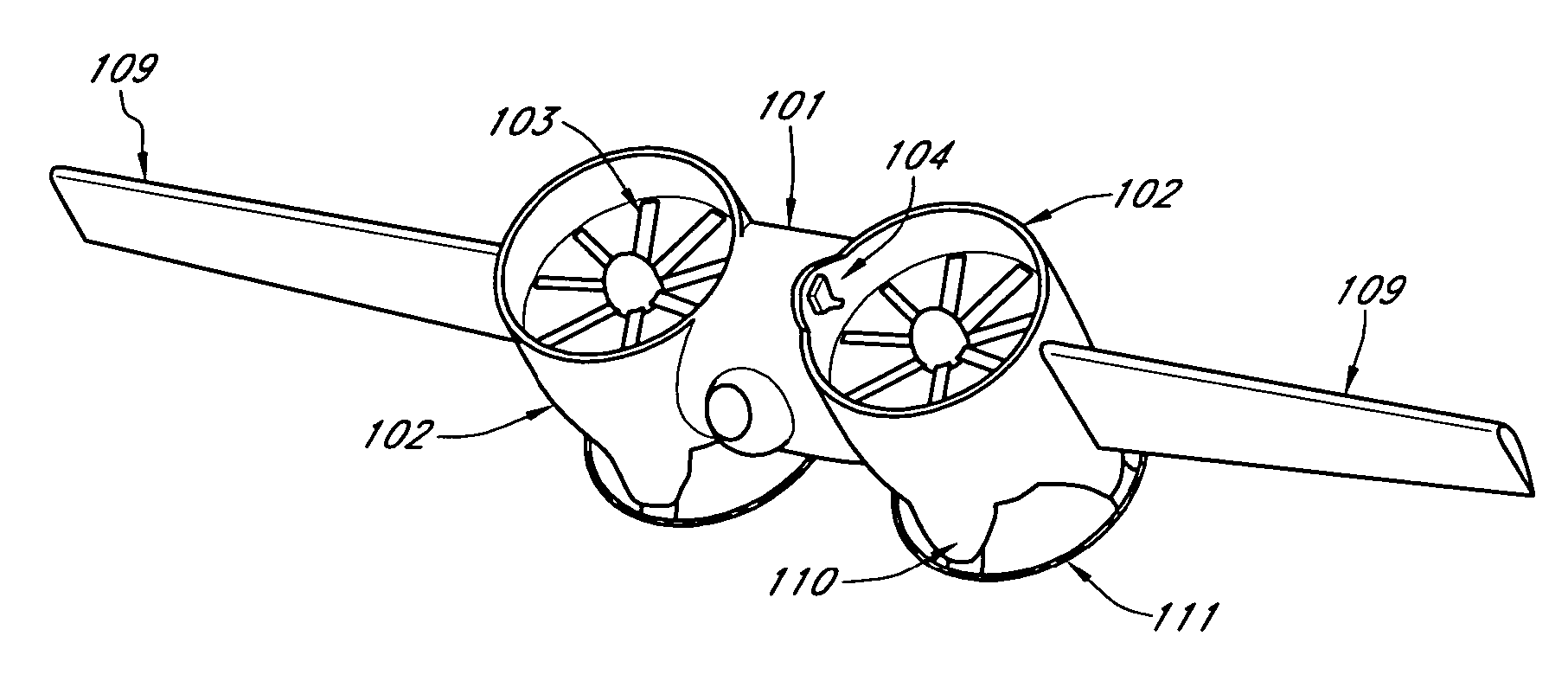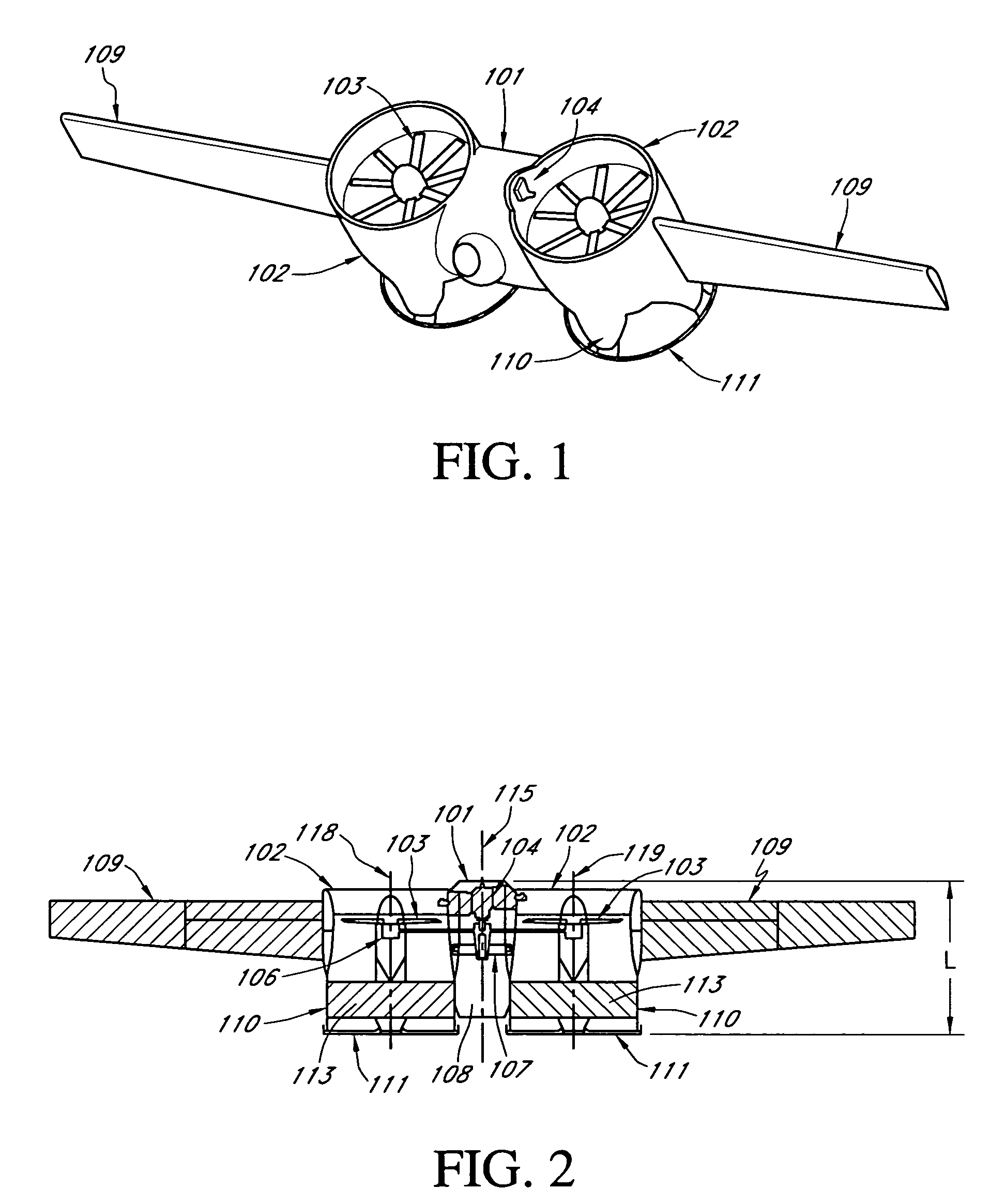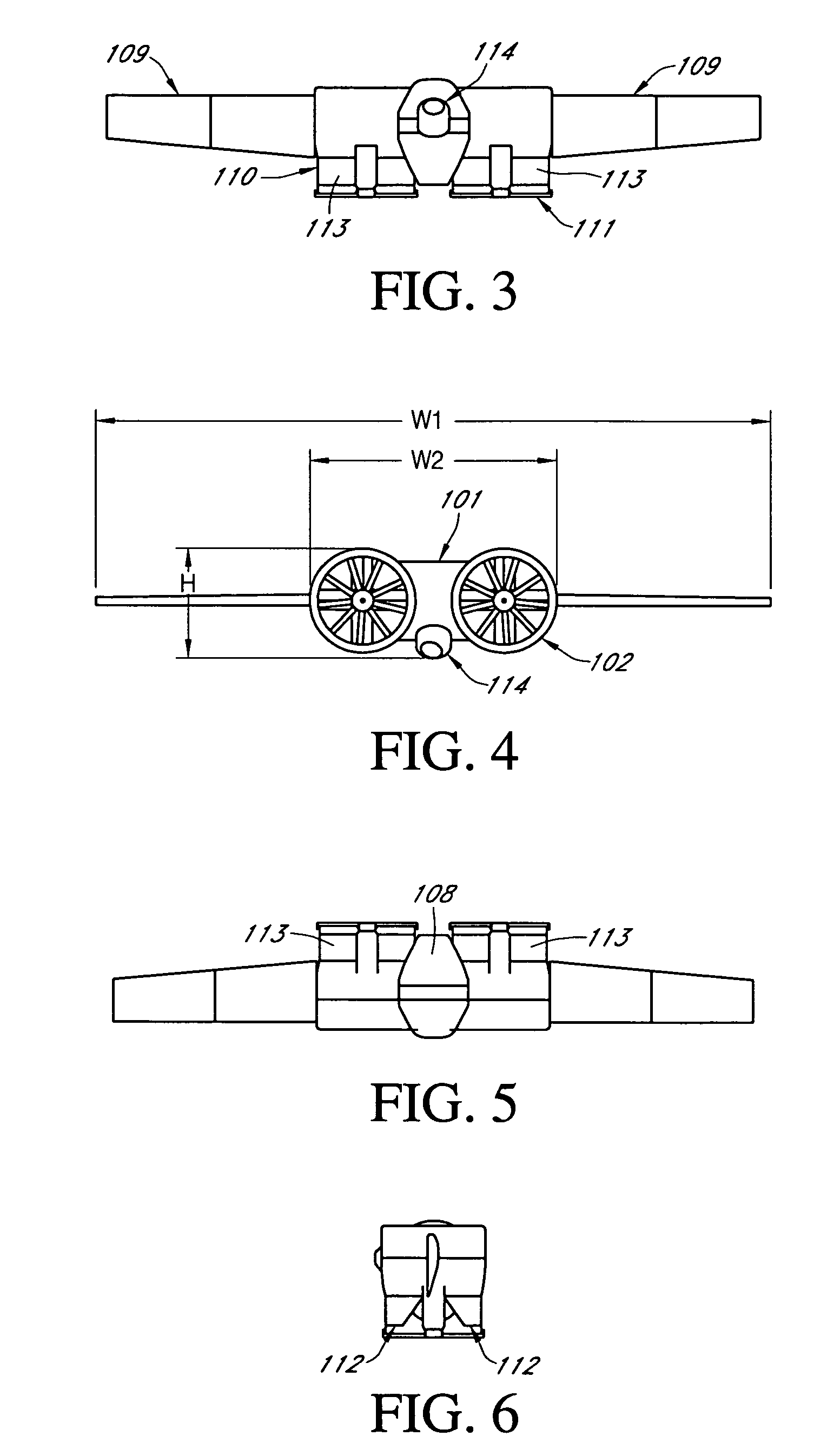Gyro-stabilized air vehicle
a technology of air vehicle and stabilizer, which is applied in the direction of vertical landing/take-off aircraft, aircraft navigation control, transportation and packaging, etc., can solve the problems of inability to land based runways, inability to use runways, and inability to provide runways, etc., to achieve the effect of improving the payload of aircra
- Summary
- Abstract
- Description
- Claims
- Application Information
AI Technical Summary
Benefits of technology
Problems solved by technology
Method used
Image
Examples
example embodiment
Class III-C Example Embodiment
[0079] One embodiment of a Class III-C can be similar to Class III-B except that the air vehicle has only one engine installed in the fuselage and one GS disk.
Control System and Stabilization
[0080] As is shown in FIGS. 1-6 and 11-18, at the rear of each shrouded propeller there can be installed two sets of control surfaces, 112 and 113 for Class II and 212 and 213 for Class III air vehicle. Preferably there are two or more control surfaces in each set. The control surfaces are pivotally mounted and are controlled by a flight control system such that by pivoting the control surfaces 112 and 113 (212 and 213) of either or both shrouds the flight operation of the air vehicles can be controlled about the pitch, yaw and roll axes. Examples of operations of the control surfaces 112 and 113 are described in greater detail below for Class II and Class III air vehicles.
[0081] As discussed above, various embodiments of the UAV incorporates a gyroscopic stabil...
example configuration
for One Embodiment of a Class III UAV
[0121] Table 2 provides a list of estimated performance characteristics for one embodiment of a Class III UAV. Other configurations are possible.
TABLE 2DescriptionCharacteristicPower plant2 × 280ccPower available for VTOL thrust2 × 25 HP = 50 HPShrouded prop inside diameter21inShrouded prop exit diameter22inShrouded prop outside diameter27inAir vehicle height (VTOL)30inAir vehicle length60inSpan (without wings)72inSpan (with wings)14ftEmpty weight (without wings)120lbWings weight10lbFuel weight (without wings)68lbFuel weight (with wings)58lbPayload weight20lbMaximum vertical takeoff weight190lbAir speed for optimized endurance60ktsAir speed for optimized range100ktsEndurance - hover at range1.5hrsEndurance - loiter (with wings)4hrsAltitude25,000ftRange125km
Example Configuration of Flight Control System
[0122]FIG. 22 shows a block diagram of one embodiment of a flight control system 700 that includes a flight control component 702. The flight c...
PUM
 Login to View More
Login to View More Abstract
Description
Claims
Application Information
 Login to View More
Login to View More - R&D
- Intellectual Property
- Life Sciences
- Materials
- Tech Scout
- Unparalleled Data Quality
- Higher Quality Content
- 60% Fewer Hallucinations
Browse by: Latest US Patents, China's latest patents, Technical Efficacy Thesaurus, Application Domain, Technology Topic, Popular Technical Reports.
© 2025 PatSnap. All rights reserved.Legal|Privacy policy|Modern Slavery Act Transparency Statement|Sitemap|About US| Contact US: help@patsnap.com



